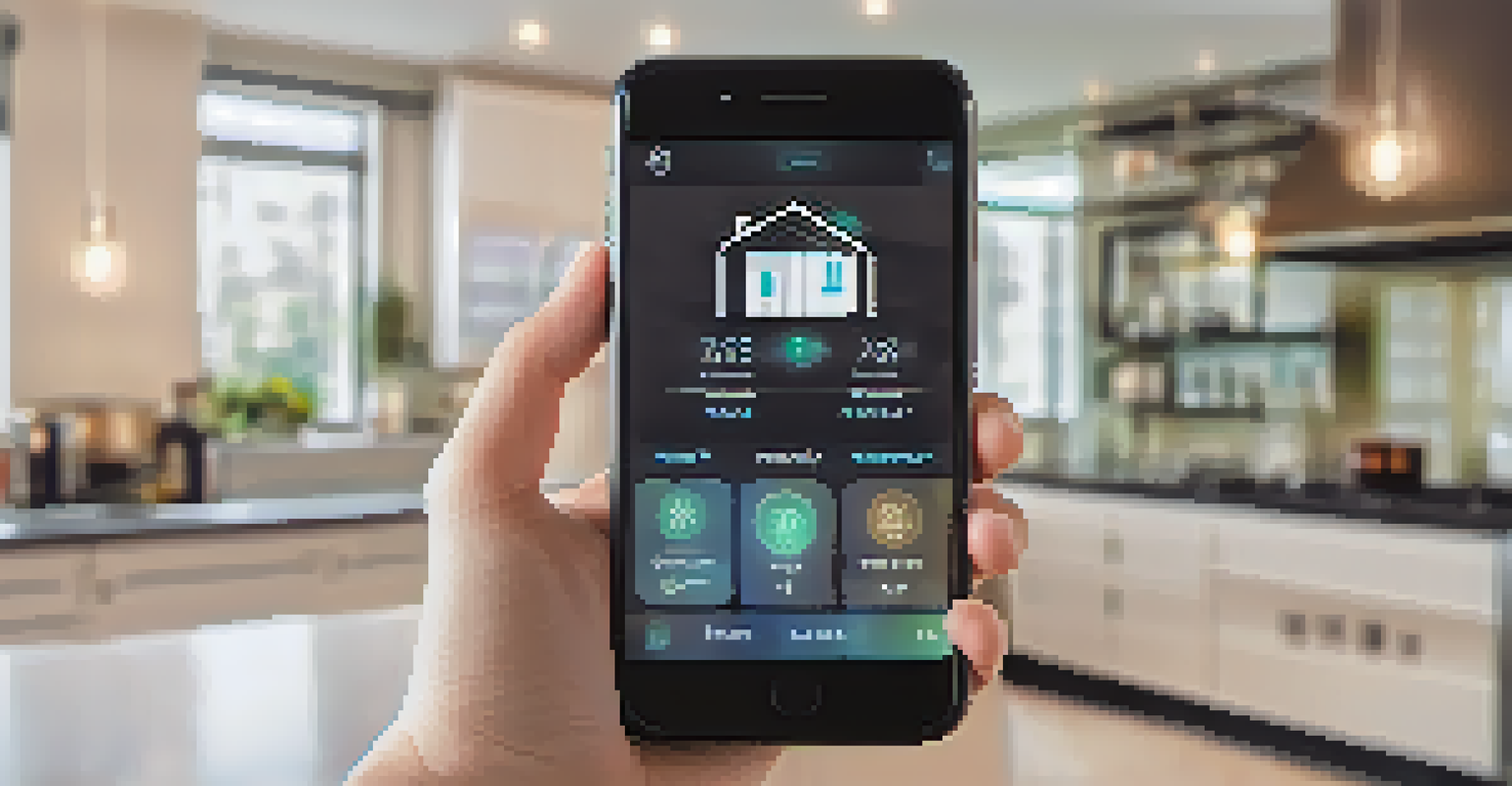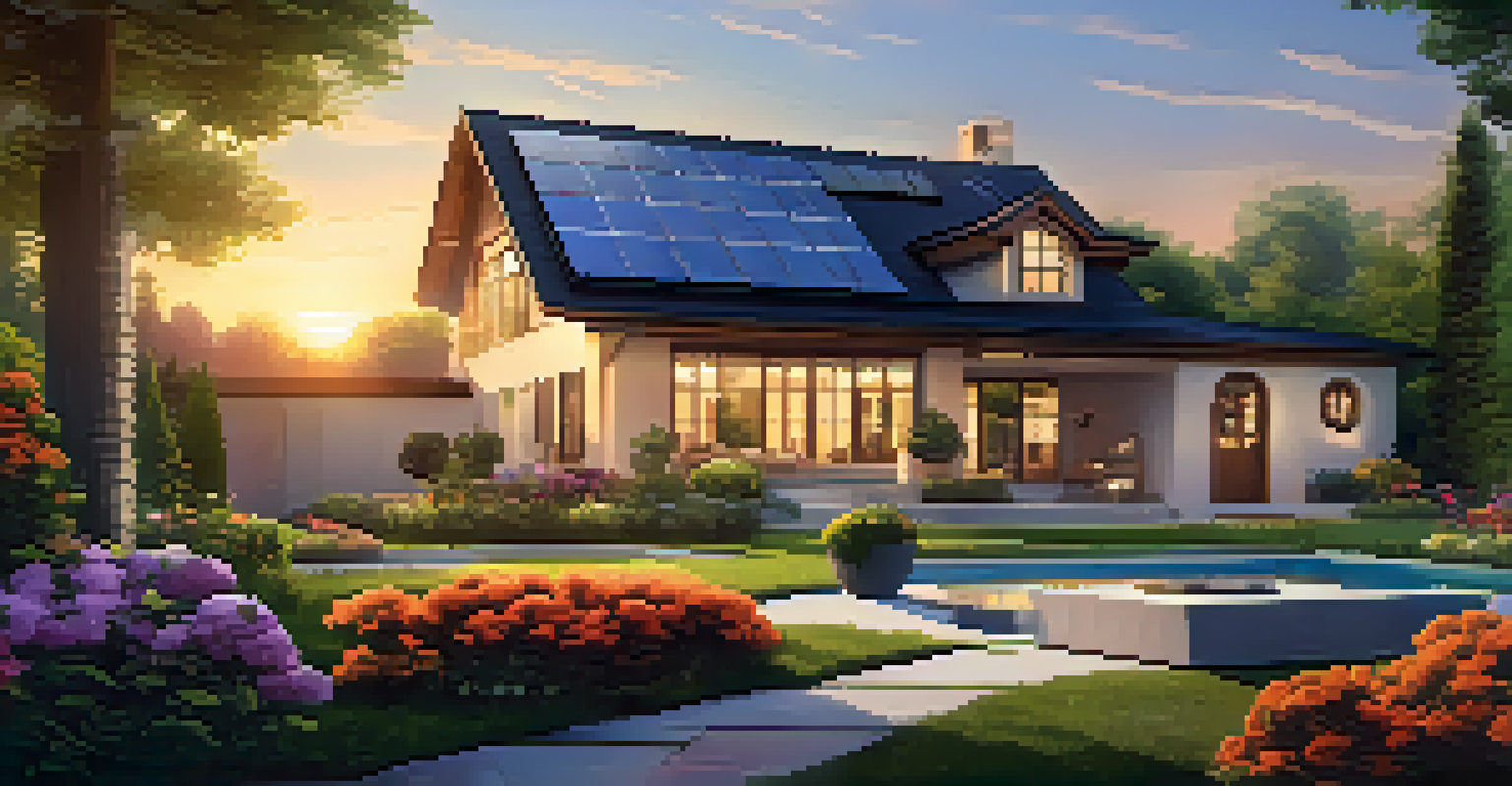Understanding Smart Home Device Ecosystems and Compatibility

What is a Smart Home Device Ecosystem?
A smart home device ecosystem refers to a network of interconnected devices that communicate and work together to enhance your home’s functionality. Think of it like a team, where each player has a specific role but contributes to a common goal: making your life easier and more efficient. These devices can include smart speakers, lights, thermostats, and security cameras, all designed to improve comfort and convenience.
Technology is best when it brings people together.
By working as a cohesive unit, these devices can automate tasks, provide remote control capabilities, and even learn your preferences over time. For instance, a smart thermostat can adjust the temperature based on your daily routine, while smart lights can dim or brighten according to the time of day. This synergy helps create a seamless living experience, allowing you to manage your home effortlessly.
However, not all devices are created equal, and compatibility is key to building a successful smart home ecosystem. Some devices work well together, while others may require additional hubs or bridges to communicate effectively. Understanding how these devices interact is essential for anyone looking to dive into the world of smart homes.
The Importance of Device Compatibility
Device compatibility is crucial in a smart home ecosystem because it determines how well different devices can communicate with each other. Imagine trying to host a dinner party, but your guests speak different languages; it would be chaotic! Similarly, if your smart devices can’t connect or understand one another, you’ll miss out on the full potential of your ecosystem.

For example, if you have a smart speaker that only works with specific brands of smart lights, you may find yourself limited in your options. This can lead to frustration and additional expenses as you try to find compatible devices that meet your needs. Ensuring that your devices are compatible from the start can save you time, money, and headaches down the road.
Smart Home Ecosystems Explained
A smart home device ecosystem is a network of interconnected devices that work together to enhance home functionality and convenience.
To check compatibility, look for devices that support common standards and protocols such as Zigbee, Z-Wave, or Wi-Fi. Many manufacturers also provide compatibility lists on their websites or packaging, making it easier to make informed choices when selecting devices for your smart home.
Popular Smart Home Ecosystems to Consider
There are several popular smart home ecosystems to explore, each with its own unique features and strengths. Platforms like Amazon Alexa, Google Assistant, and Apple HomeKit are widely recognized for their user-friendly interfaces and extensive compatibility with third-party devices. Choosing the right ecosystem often depends on your existing devices and preferences.
The future is already here – it's just not very evenly distributed.
For instance, if you already own several Amazon Echo devices, integrating smart lights and thermostats that work with Alexa can create a more cohesive experience. Similarly, if you’re an Apple user, HomeKit allows for seamless control of your devices through your iPhone or iPad, making it a natural choice. Finding an ecosystem that aligns with your lifestyle can greatly enhance your smart home experience.
Additionally, some ecosystems offer exclusive features that can tip the scales in their favor. For example, Google Assistant excels at voice recognition and search capabilities, while Apple HomeKit provides robust privacy features. Exploring these options can help you identify which ecosystem is best suited for your needs.
Choosing the Right Devices for Your Ecosystem
When selecting devices for your smart home ecosystem, it’s essential to consider both compatibility and your specific needs. Start by assessing the areas of your home that could benefit most from automation, such as lighting, security, or climate control. This will help you focus your search and avoid becoming overwhelmed by the multitude of options available.
Once you have a clear idea of your priorities, research devices that are compatible with your chosen ecosystem. Read reviews, compare features, and consider the long-term value of the devices you’re interested in. Investing in high-quality devices that will last can save you money in the long run and ensure a smoother experience.
Compatibility is Key
Ensuring device compatibility is crucial for a seamless smart home experience, as incompatible devices can lead to frustration and increased costs.
Lastly, don’t forget to consider the aesthetic appeal of your devices as well. Smart home technology should not only be functional but also enhance the overall look of your home. Choose devices that align with your style and preferences to create a harmonious environment.
Setting Up Your Smart Home Ecosystem
Setting up your smart home ecosystem can be an exciting yet daunting task. Start by following the manufacturer’s instructions for each device, as they often include detailed steps for connecting to your Wi-Fi network and integrating with your chosen ecosystem. Take your time to ensure each device is set up correctly, as a solid foundation is crucial for a successful smart home experience.
Once your devices are connected, take advantage of the app associated with your ecosystem to customize settings and create routines. For example, you can set schedules for your lights to turn on or off at specific times, or program your thermostat to adjust the temperature based on your daily routine. This level of control allows you to tailor your smart home to fit your lifestyle.
Don’t hesitate to experiment with different features and integrations as well. Many ecosystems allow for automation and triggers, meaning you can set multiple devices to respond to a single command. This can create a more synchronized home environment, making it feel even more intuitive and responsive.
Maintaining Your Smart Home Devices
Just like any technology, smart home devices require regular maintenance to function optimally. Start by keeping your devices updated with the latest firmware and software, as manufacturers often release updates that enhance performance and security. This simple practice can help prevent compatibility issues and ensure your devices run smoothly.
Additionally, monitor the performance of your devices and troubleshoot any issues that arise. If a device stops responding or doesn’t work as expected, check your Wi-Fi connection or consult the manufacturer’s support resources for guidance. Staying proactive about maintenance can save you from larger headaches down the road.
Future of Smart Homes
The future of smart home ecosystems promises enhanced convenience and user-friendly experiences through advancements in technology and standardization.
Finally, consider periodically reviewing your smart home setup to see if there are new devices or upgrades that could enhance your ecosystem. The smart home market evolves rapidly, and keeping your system up-to-date with the latest technology can improve functionality and add convenience to your daily life.
The Future of Smart Home Ecosystems
As technology continues to advance, the future of smart home ecosystems appears bright and full of possibilities. Innovations in artificial intelligence and machine learning will likely lead to even more intuitive and personalized experiences. Imagine a home that can anticipate your needs and adjust accordingly without you having to lift a finger!
Additionally, the push for standardization across devices and ecosystems is gaining momentum. Initiatives like Matter aim to create a unified standard for smart home devices, making it easier for consumers to mix and match products from different manufacturers. This could pave the way for an even more interconnected and user-friendly smart home environment.

Ultimately, the future of smart homes is about enhancing convenience, security, and energy efficiency. As more people embrace the benefits of smart technology, we can expect to see exciting developments that will make our homes smarter and our lives easier.